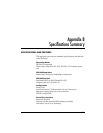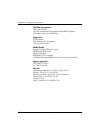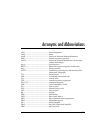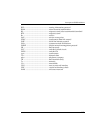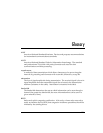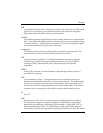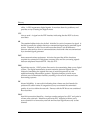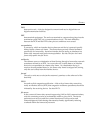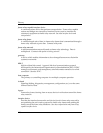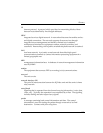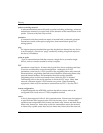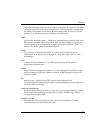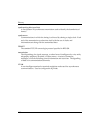
61200214L1-1 IQ Probe User Manual 123
Glossary
CIR
committed information rate. Less than or equal to the access rate, the CIR is used
by the service provider for rate enforcement when the network is congested.
When rates exceed the CIR, frames may be discarded.
clocking
An oscillator-generated signal that provides a timing reference for a transmission
link. A clock provides signals used in a transmission system to control the timing
of certain functions. The clock has two functions: (1) to generate periodic signals
for synchronization and (2) to provide a time base.
control port
The electrical interface between the IQ Probe unit and a control terminal. The
control terminal is used to communicate commands to the unit.
CPE
customer premise equipment. All telecommunications terminal equipment
located on the customer premises including telephone sets, private branch
exchanges (PBXs), data terminals, and customer-owned coin-operated
telephones.
C/R bit
In the Q.921 protocols, a bit that identifies a data-link-layer frame as either a
command or a response.
CRC
cyclic redundancy check. A computational means to ensure the accuracy of
frames transmitted between devices in a frame relay network. The mathematical
function is computed, before the frame is transmitted, at the originating device.
Its numerical value is computed based on the content of the frame. This value is
compared with a recomputed value of the function at the destination device.
CS
See CTS.
CSU
channel service unit. A device used to connect a digital phone line coming in
from the phone company to either a multiplexer, channel bank, or directly to
another device producing a digital signal (for example: a digital PBX, a PC, or
data communications device). A CSU performs certain line-conditioning and
equalization functions and responds to loopback commands sent from the central



